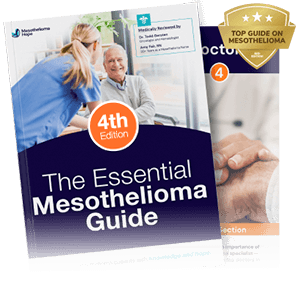Factory Workers and Asbestos Exposure
Factory processes became popular during the Industrial Revolution. As the world’s population expanded, the need for consumer products exploded. Enterprising businesses realized that factory production was much more efficient at meeting this demand than single item craftsmanship.
The assembly line emerged, and factories sprang up across the nation. Although factory production allowed repetitive tasks to save time and labor, human workers were still required. Factories employed hundreds of thousands of workers.
From the 1930s to the early 1980s, many factories used asbestos. As a result, almost every factory worker was exposed to asbestos.
How Factory Workers Were Exposed to Asbestos
Working with raw asbestos as well as older, finished products happened all the time in factories. Even if factory workers didn’t handle raw asbestos, they often worked with materials, factory tools, and equipment that contained asbestos.
All workers employed in American factories experienced similar environments. Not all factory workers dealt with manufacturing tasks. Many acted in support roles.
These workers were exposed to the same atmosphere as workers in primary production roles. Every factory employee breathed the same air and came in close contact with each other’s clothing, tools, and equipment.
Many asbestos raw material suppliers were well aware of asbestos risks as early as the 1930s. These suppliers, as well as factory owners, investors, and administrators, knowingly put workers’ health in jeopardy.
Factories using asbestos from the 1930s to the early 1980s did little to protect their workers from asbestos exposure.
Asbestos Products Used in Factories
By the early 20th century, factories were major employers and contributors to the national economy. Every factory was looking for ways to improve production and profits. The answer came in the form of asbestos-containing products.
The following factories used asbestos-based products:
- Aerospace facilities
- Automotive assembly plants
- Building material production
- Chemical plants
- Drywall board producers
- Electronic component factories
- Food processing plants
- Heavy equipment builders
- Insulation producers
- Oil refineries
- Paper mills
- Pharmaceutical companies
- Steel mills
- Textile manufacturers
All of the different industries listed above — and many others — used asbestos in product manufacturing because it was cheap, lightweight, and plentiful.
Asbestos was a new and promising material at the time. Asbestos was thought to be the answer for all insulation and fire resistance applications.
Factory Worker Careers
Factory workers made up a large spectrum of people employed in manufacturing plants.
Factory workers filled many different roles, including:
- Workers handling raw materials like minerals and fabrics
- Production line workers who assembled components into final products
- Machinists who built tools for assembly lines and processing equipment
- Maintenance people who kept operations running
- Supervisors who inspected products and oversaw workers
- Technicians who researched, developed, and tested new products
- Clerical staff who kept records and managed payroll
- Shipping and receiving workers who took in raw materials and sent out finished products
- Outside contractors like government regulators, salespeople, and investors
Practically anyone who was involved in transforming raw materials into products was considered a factory worker. Unfortunately, factory workers who handled asbestos on a regular basis were had a higher risk of health problems later in life.
Factory Worker Health Risks
Asbestos is a relatively stable material as long as it’s not disturbed. Of course, leaving raw asbestos undisturbed is not possible when turning it into a usable product.
Asbestos dislodges easily when handled and becomes brittle or friable when old and dry.
Simply moving asbestos causes microscopic fibers to dislodge and become airborne. When inhaled, these tiny but deadly particles lodge themselves into the linings of the lungs, abdomen, and heart.
Asbestos fibers remain lodged in organ linings for decades, causing severe irritation to healthy tissues over time.
Eventually, a mass of scar tissue from asbestos fiber irritation can trigger the growth of mesothelioma — a disease only caused by exposure to asbestos.
Help for Mesothelioma Victims
For many factory workers who developed mesothelioma, their place of employment was responsible for their illness.
If you received a mesothelioma diagnosis after being exposed to asbestos at your factory job, you might be eligible for legal compensation.
By working with an experienced mesothelioma lawyer, the manufacturers of asbestos-containing products that harmed you can be held financially responsible.
Courts have awarded compensation to mesothelioma victims for their medical expenses and lost income. Some victims also received punitive damages from negligent asbestos suppliers.
Further, family members may file claims for those who died from mesothelioma through wrongful death lawsuits.
Our Justice Support Team has helped those with mesothelioma receive compensation. Get a free case review today.



